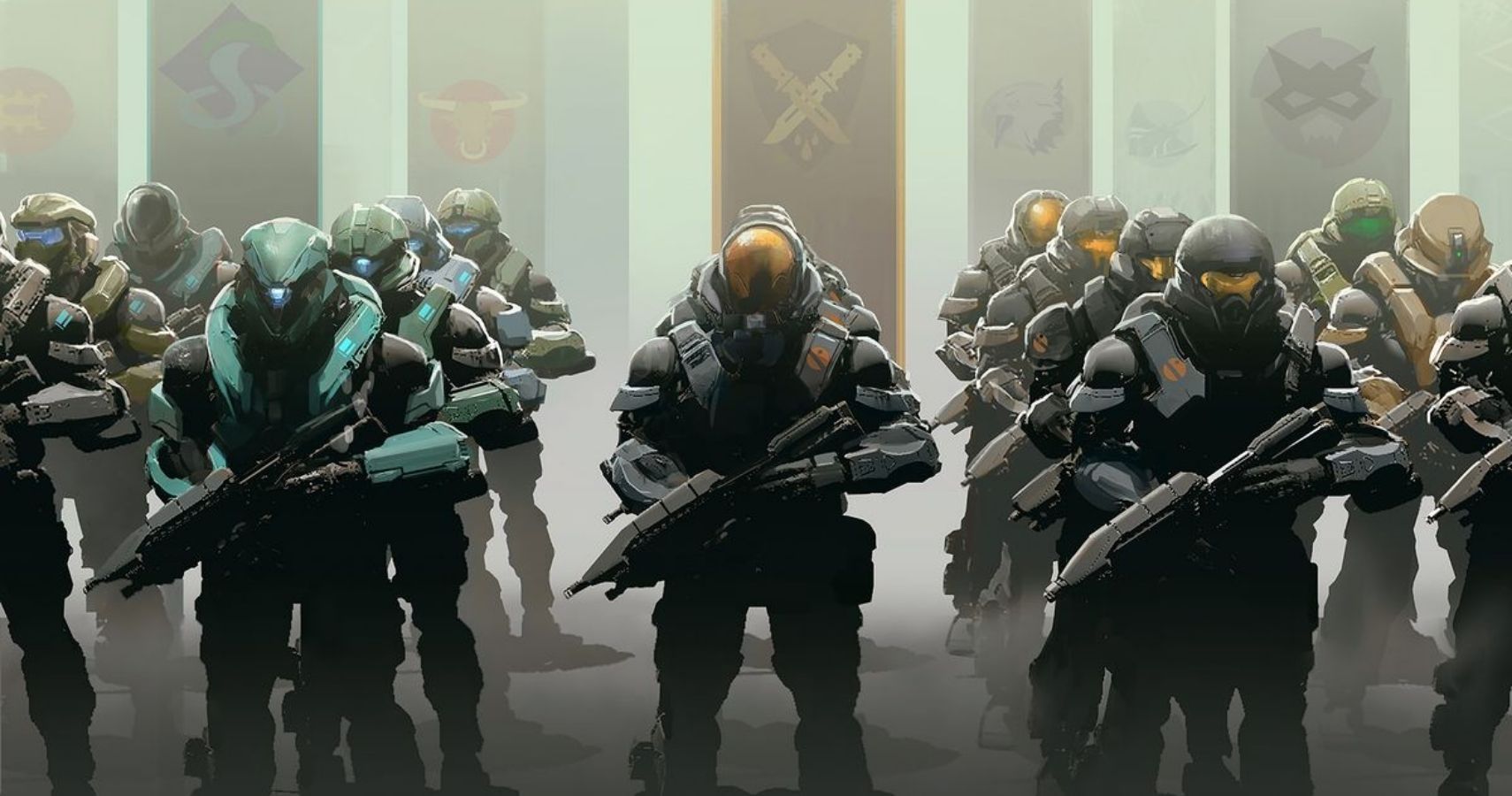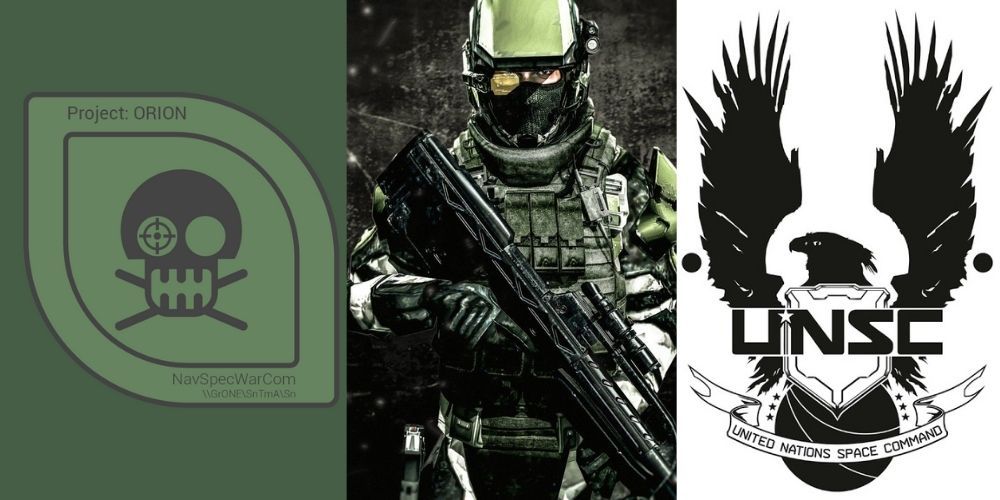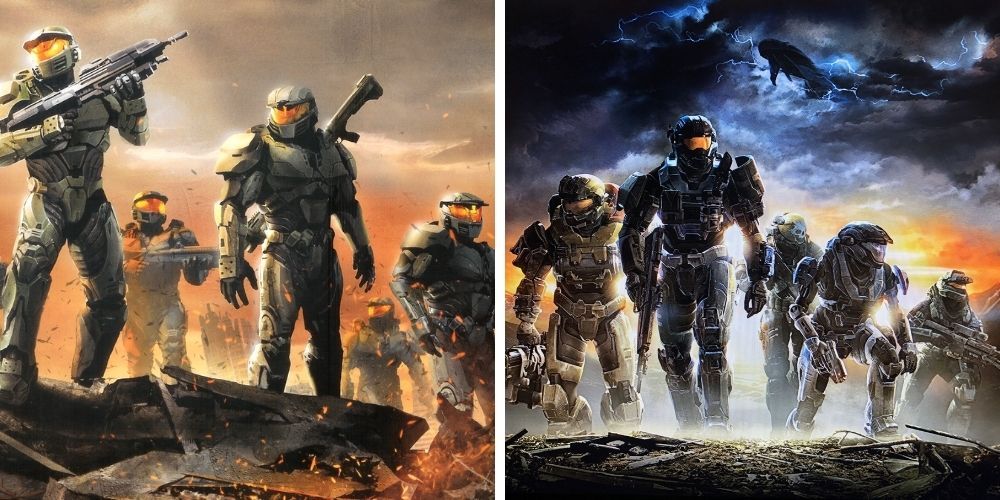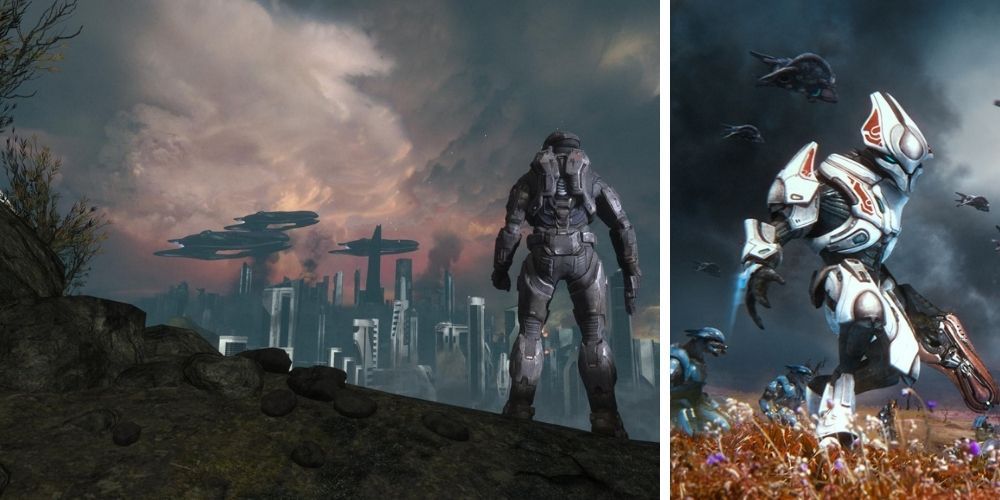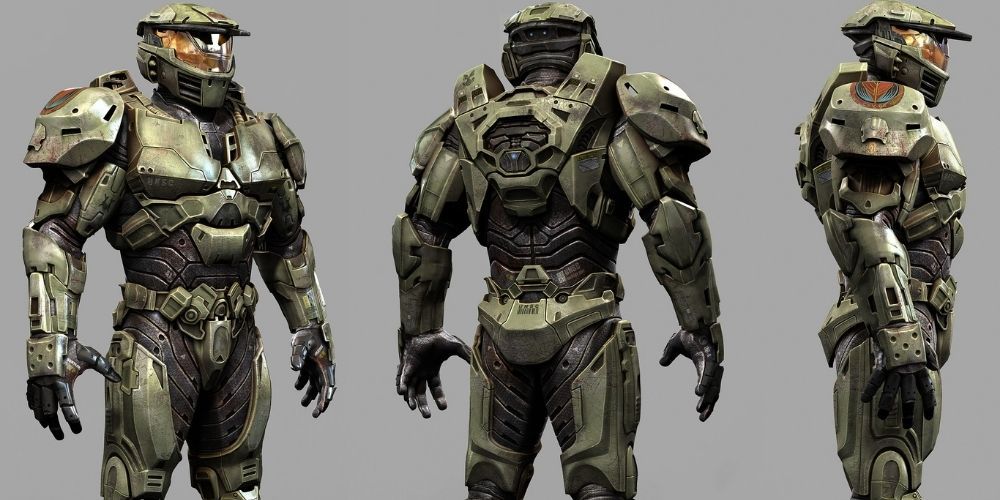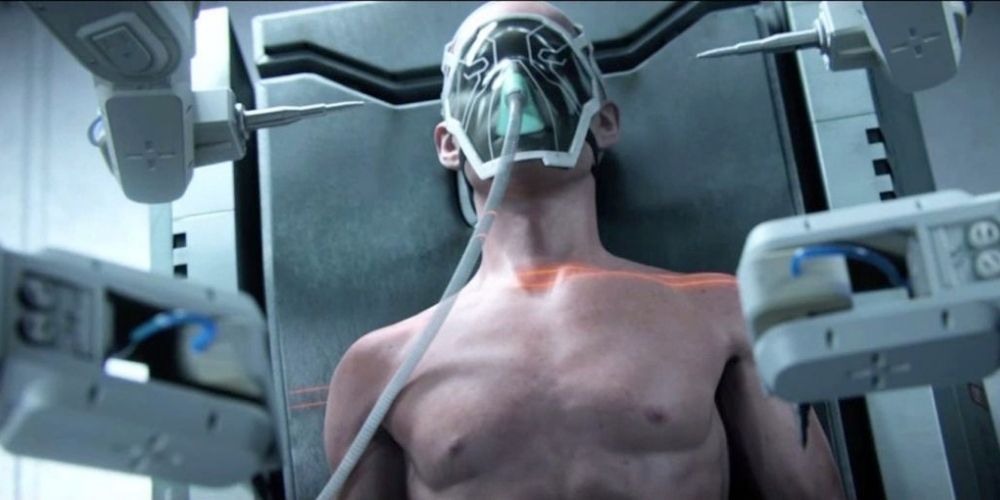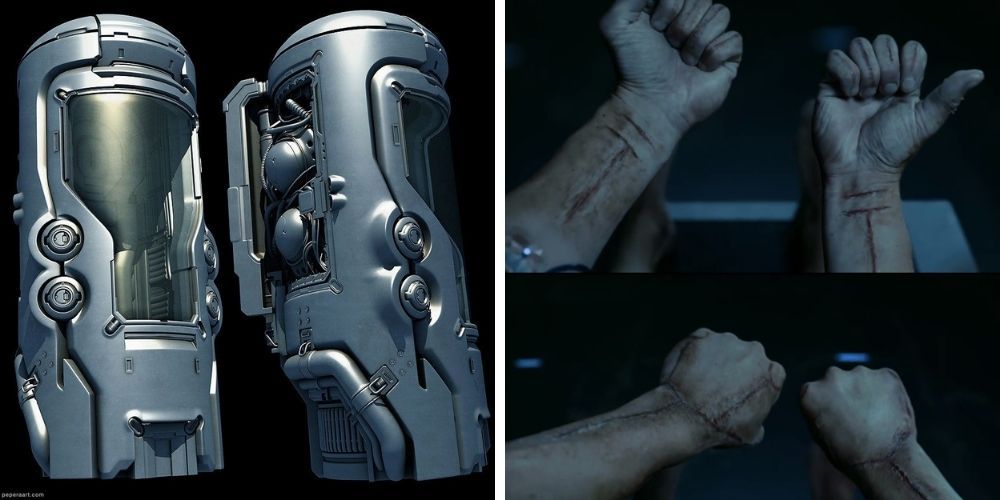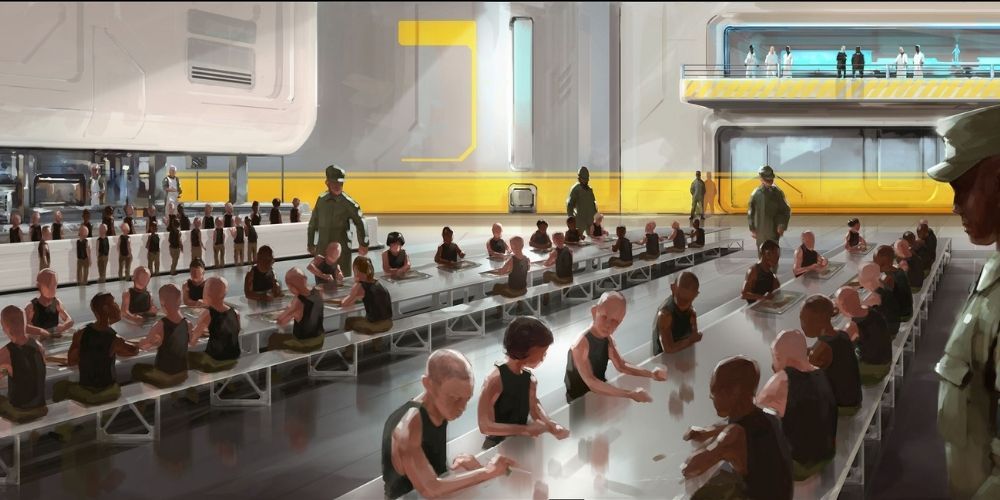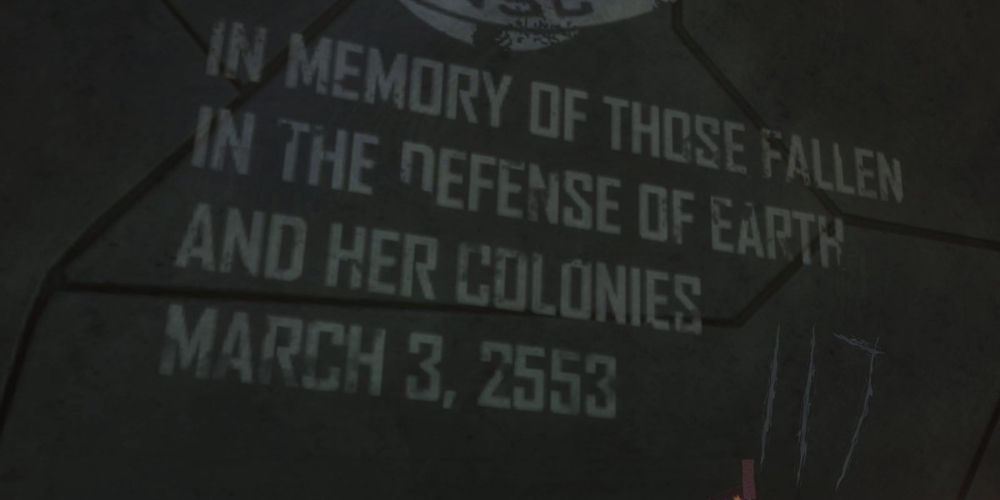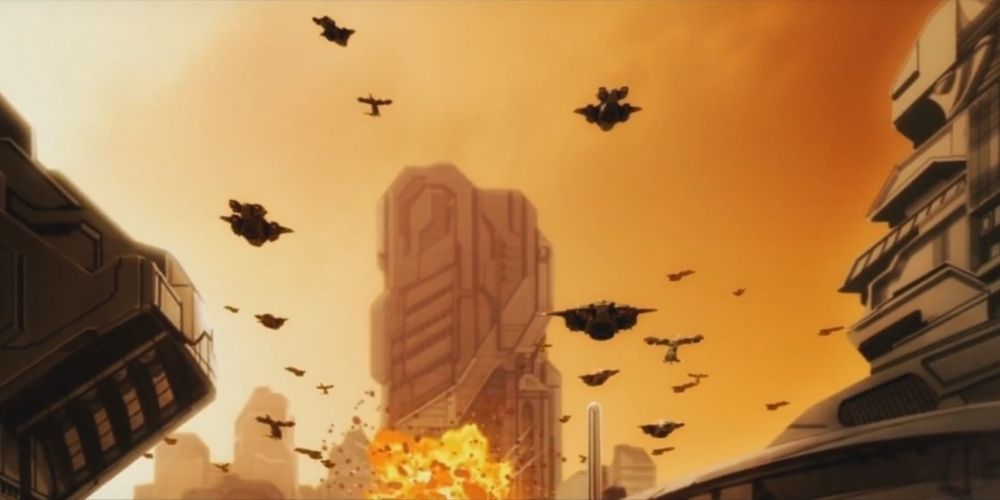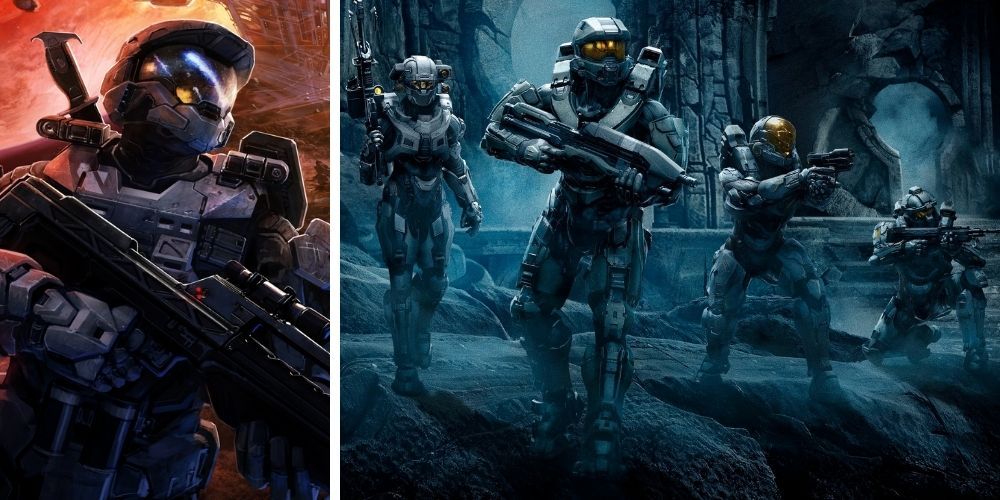With 20 books, over 10 games and even a movie of sorts, the Halo franchise is truly massive in its lore and fanbase. In terms of the video game franchise, it is arguably one of Microsoft and Xbox's largest and most successful to date. The main Halo games follow the Master Chief, Spartan 117 John, throughout the events of the Human-Covenant war and beyond. Alongside this title are various other spinoff games featuring the likes of other Spartans such as Noble Team as well as ODST troops among others. With the upcoming release of Halo Infinite, despite its release, here are some lesser known facts about the Spartans and the lore surrounding them.
10 Origin And Purpose Of Program
The Spartans originated from the Spartan Program, which was originally known by a different name and for a different purpose. The original Spartan I Program was known as the Orion program. The purpose of the program was to create the perfect soldiers in order to watch over the colonies as well as the civilians and governments within. With this, they were used to quell uprisings and make it so other colonies did not follow their example.
Squashing uprisings was their first goal as elite soldiers. The second was to lessen civilian casualties and avoid civil war. The third and last original goal involved reducing the cost of pacification through the soldiers and their abilities.
9 Spartan II and Spartan III
Following the Spartan I/Orion program came the Spartan II and Spartan III programs. The Spartan II Program was especially controversial in that it was comprised of all children. Not only was the program only it full of children, but these children were all taken from their homes. In an effort to hide their kidnappings, they replaced the children with flash clones who would die about a year after.
As for the Spartan III’s, they were looked at as being more expendable. To this end, they were given cheaper armor and were usually sent on suicide missions.
8 Operating In Absolute Secrecy
Due to the nature of the Spartan III’s missions, they typically operated in absolute secrecy. As they did go on various missions with the knowledge that they most likely wouldn’t return, the UNSC did not want the public finding out about them or the nature of these missions. Regardless, it was known that they helped turn the tide of the Human-Covenant War through various battles. Despite the secrecy of the Spartan II’s and Spartan III’s, the Spartan IV’s did not and the public did know more about Master Chief’s deeds too.
7 Mjolnir Armor
While the Spartan III’s were given cheaper armor, the preceding generation of Spartan II’s were the first to receive the highly advanced Mjolnir armor (no relation to Thor's hammer of the same name). The Spartan II’s and the later Spartan IV’s wore this armor which played a large role in making them the deadly foes they were, even referred to as demons by the Covenant. This armor could only be worn by those with augmentations given to them, not any regular soldier. The suit is powered by a small fusion reactor to keep the Mjolnir armor and it’s systems running.
6 Augmentations And The Process Behind It
As far as the augmentations go, it was a painful yet effective process that gave people the ability to wear the Mjolnir armor among other things. With this, some could achieve speeds of up to 60 mph. In fact, Master Chief even tore his achilles heal due to the strain he put on his body.
These augmentations were undergone by the children in the Spartan II Program and left some lasting scars. The procedures included: occipital capillary reversal, carbide ceramic ossification, catalytic thyroid implants, muscular enhancement injections, and superconducting fibrification of neural dendrites.
5 Survival Rate
These procedures, while being very effective, were also quite deadly and injurious to those forced to undertake them. Out of the 75 children to go through it, 30 would be killed and 12 others would be crippled. Those who were crippled would leave the Spartan II program, moving on to take positions at the Office of Naval Intelligence.
Only 33 children survived the procedures without physiological deformities and 2 of those committed suicide in the following weeks when coming face to face with their flash clones. The bodies of certain candidates who did not make it were placed in cryonic suspension to later potentially be resuscitated. On a brighter note, some of those children who were crippled may have been rehabilitated in the future.
4 Education And Limitations
While Spartan II's are highly regarded as some of the best soldiers and arguably the best generation of Spartans, Dr. Halsey, one of the great minds behind the program, thought they should be independent thinkers. With this, they were taught many subjects such as math, science, history, reading, writing and military tactics. This was paired with a grueling physical training portion where they had to endure all sorts of trials and drills.
With the education came certain limitations that the Spartans had to face throughout the training and beyond. For instance, they were not allowed to grow out their hair. Despite some Spartan I's having children, Spartans typically suffered a reduced drive.
3 Always MIA
Another interesting aspect of Spartans is just how crucial they were to the public eye. It was often the case that Spartans would die in battle or simply disappear never to be seen again. Despite this, they were always listed as MIA instead of KIA. This was partially because they could potentially turn up later on due to their resilience and strength. The bigger reason was to keep the morale of the army and public up in support of the wars as Spartans were seen as incredibly strong and hearing of their deaths would cause public opinion and hopes of winning to plummet.
2 Defection And Survival Through The War
While many Spartans were lost throughout the course of the war and did not have the longevity that Master Chief had, there were some notable exceptions. There are sixteen Spartan II's that survived through the entire course of the Human-Covenant War. These are: John-117, Frederic-104, Kelly-087, Linda-058, Naomi-010, Jai-006, Adriana-111, Michael-120, Leon-011, Robert-025, August-099, Randall-037, Otto-031, Victor-101, Margaret-053, and Roma-143. The last 5 of the 16 were killed following the war.
As highly regarded as the Spartans were, there were some cases where they would defect and leave the army. The following Spartans are examples of those identified as defecting from the UNSC to a number of Insurrectionist cells: Soren-066, Ilsa Zane, Rudolf Schein, Michael Crespo, and Vladimir Scruggs.
1 Notable Spartan II's
There are many Spartans throughout the years who have stood out for various reasons and these Spartan II's are some examples of them. From Grey Team, Spartan 006 Jay worked behind enemy lines for the majority of the war. Grey Team was interesting in how separate they were from the other soldiers and they proved rather effective in their efforts, surviving the entire Human-Covenant War.
Blue Team was another team with some highly effective members such as Spartan 087 Kelly, Spartan 104 Fred and Spartan 058 Linda. Kelly was known for being the fastest Spartan with equally quick reflexes as well as over 200 missions and operations under her belt. Fred was a very balanced Spartan rivaling the Master Chief in many competitions, often holding the mantle of commander. As for Linda, she is the best marksman of all the Spartans, being part of the first Spartan II team to see action.
Last but not least is Spartan 117 John, the Master Chief himself who is very familiar to those following the Halo franchise. What many may not know is that he did his first mission when he was 14 and is about 40 by the time the franchise starts. He is by far the most important of the Spartans, taking part in over 200 ground battles. Dr. Halsey even said he was the best spartan candidate and his effectiveness was unmatched.

